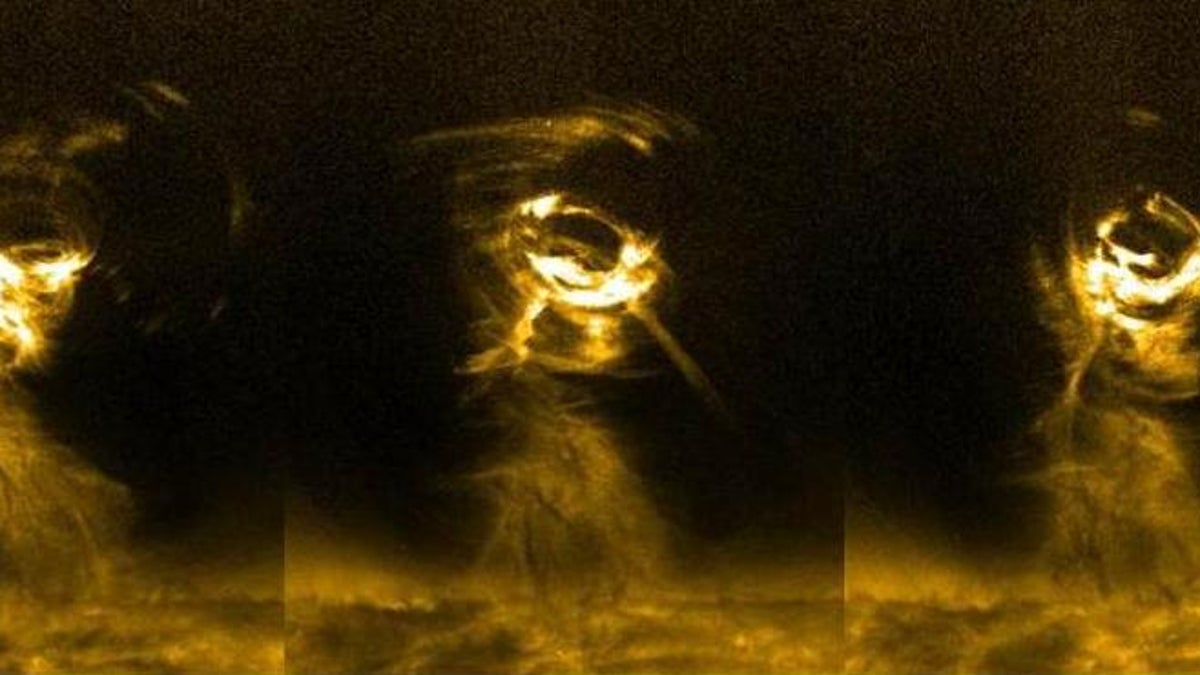Massive solar tornado caught on film
Astronomers present images of a tornado as much as five times the width of Earth raging on the sun, an event they believe triggers solar storms.

Astronomers have captured images of a solar tornado five times as wide as Earth, providing clues into how solar storms form.
Scientists at Aberystwyth University presented a movie of a solar twister yesterday at the National Astronomy Meeting in Manchester, England. The images were collected last September by a telescope on NASA's Solar Dynamic Observatory (SDO) satellite, which tracks variations in the sun to help predict space weather.
Solar tornadoes occur when super-heated gases get sucked up from sun and spiral towards its atmosphere. Along the way, these gases, traveling at about 185,000 miles per hour, drag magnetic fields and electric currents into the high atmosphere, according to Aberystwyth University.
These tornadoes often happen at the root of a coronal mass ejection, when a portion of the sun's atmosphere breaks off and hurtles through space. It's the release of these high-energy particles from sun that causes solar storms, which on Earth can disrupt satellites and even the electrical grid.
"This unique and spectacular tornado must play a role in triggering global solar storms," Huw Morgan, a co-discoverer of the solar tornado, said in a statement.
Images of smaller tornadoes have been captured before, but this is perhaps the largest ever recorded on video, according to the university.
The past few months have seen a surge in space weather from coronal mass ejections because the sun is in a period of high activity that is expected to peak next year.

